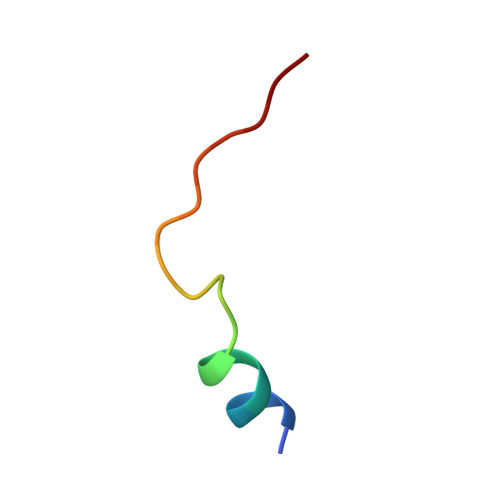Structural insights into mis-regulation of protein kinase A in human tumors.
Cheung, J., Ginter, C., Cassidy, M., Franklin, M.C., Rudolph, M.J., Robine, N., Darnell, R.B., Hendrickson, W.A.(2015) Proc Natl Acad Sci U S A 112: 1374-1379
- PubMed: 25605907
- DOI: https://doi.org/10.1073/pnas.1424206112
- Primary Citation of Related Structures:
4WB5, 4WB6, 4WB7, 4WB8 - PubMed Abstract:
The extensively studied cAMP-dependent protein kinase A (PKA) is involved in the regulation of critical cell processes, including metabolism, gene expression, and cell proliferation; consequentially, mis-regulation of PKA signaling is implicated in tumorigenesis. Recent genomic studies have identified recurrent mutations in the catalytic subunit of PKA in tumors associated with Cushing's syndrome, a kidney disorder leading to excessive cortisol production, and also in tumors associated with fibrolamellar hepatocellular carcinoma (FL-HCC), a rare liver cancer. Expression of a L205R point mutant and a DnaJ-PKA fusion protein were found to be linked to Cushing's syndrome and FL-HCC, respectively. Here we reveal contrasting mechanisms for increased PKA signaling at the molecular level through structural determination and biochemical characterization of the aberrant enzymes. In the Cushing's syndrome disorder, we find that the L205R mutation abolishes regulatory-subunit binding, leading to constitutive, cAMP-independent signaling. In FL-HCC, the DnaJ-PKA chimera remains under regulatory subunit control; however, its overexpression from the DnaJ promoter leads to enhanced cAMP-dependent signaling. Our findings provide a structural understanding of the two distinct disease mechanisms and they offer a basis for designing effective drugs for their treatment.
Organizational Affiliation:
New York Structural Biology Center, New York, NY 10027; [email protected] [email protected].



















